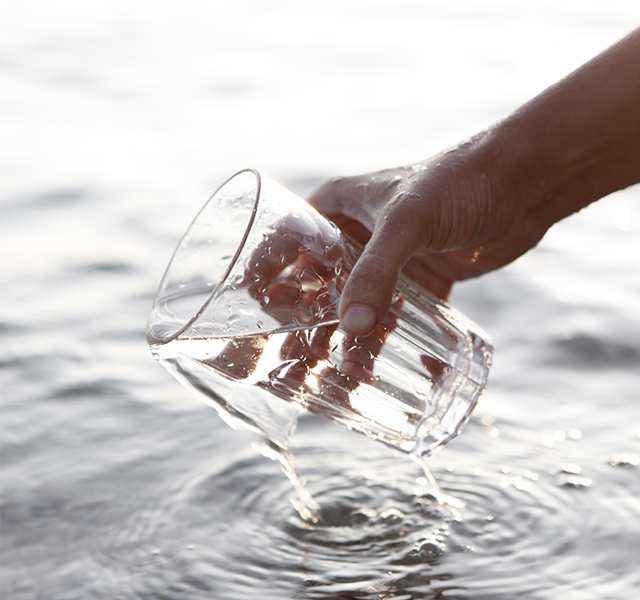Applications for water treatment
Water is essential to all life and is man’s most important provision. Potable water becomes sewage after being used by people – sewage that has to be treated in order not to cause too much eutrophication of lakes, rivers and seas.
Potable Water
Recommended Products
Aluminium Sulphate
Aqualenc G10
Ferral 2060
Colour/Total Corganic Carbon
The removal of coloured organic species in upland waters including rivers, lakes and reservoirs is vital in the provision of clean and healthy drinking water. Chlorine reacts with organic residuals to form carcinogenic by-products (trihalomethanes or THM’s) as well as impairing taste. Treatment efficiency is dependent on product dose, coagulation pH, contact time and temperature. Aluminium Sulphate has for many years been proved to be both reliable and cost effective in the production of high quality drinking water.
Algae
Algal blooms often occur in lakes and reservoirs under certain climatic conditions which can substantially increase the load on water treatment plants and impact on treatment efficiency and water quality. Again, Aqualence G10 is well proven in this environment.
Almuinium Residuals
Optimum control of coagulation pH is essential in maintaining low aluminium residuals. Aluminium Sulphate can be used successfully in the pH range 6-7 and acid or alkali is often used for effective control. Doses of sulphuric acid can be high and uneconomic in hard water areas where raw water pH can be in the range 7.5-9. In these cases, Aqualence G10 is recommended where aluminium residuals can be minimised at a coagulation pH of 7.5 which can offer savings in acid, alkali and sludge by-product levels.
Cold Water
In cold climates where raw water temperatures consistently drop below 3oC, the reaction rate of Aluminium Sulphates slows and a longer contact time is required to achieve effective coagulation. Where this cannot be achieved, an increase in coagulation pH to around 7 can improve treatment. Alternatively, a highly cationic PAC product such as Aqualence G10 can perform well at these temperatures.
Desalination
With climate change threatening hotter and drier summers, desalination plants can offer the most practical solution for the provision of high quality water from tidal waters. The key treatment process in desalination is reverse osmosis which forces salty water through extremely fine membranes.





